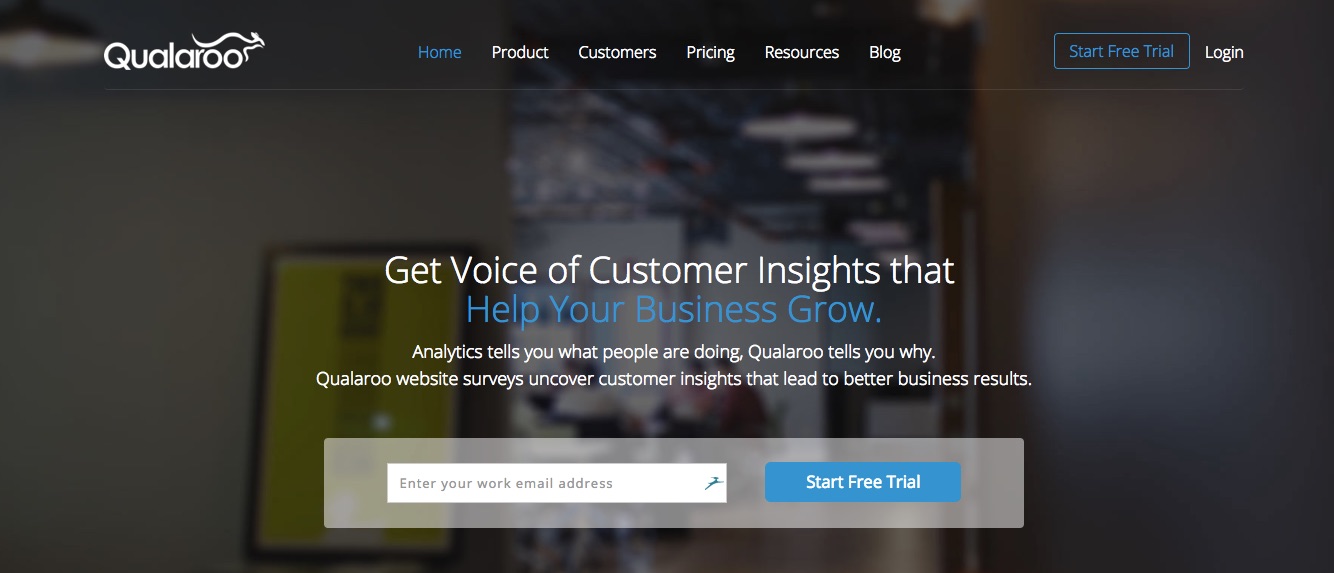…and how to get the info you need
If you do anything online — a website, a blog, a mobile app — chances are you’re using Google Analytics. Somewhere between 30 and 50 million websites rely on it for tracking and measuring the metrics that matter to them.
It’s powerful. It’s robust. It’s free (and everyone loves free).
But it’s not perfect. Like everything else, it has its shortcomings. It’s flawed, occasionally misleading, and an outright failure in some ways.
Analyzing and exploring the data it collects can guide your decisions and help you transform your website into a conversion machine.
That’s good.
However, there are some things it can’t tell you. Information you need to make the most informed decisions about your business, your website, and your marketing strategies.
That’s bad.
Are there ways to bridge those gaps? You better believe it.

User Experience and Intent
The most consistent complaint against the platform is that it focuses too much on your success — traffic, clicks, downloads, and conversions — and not enough on your failures, which can be even more revealing.
Analytics excels at presenting the “what:” bounce rates, exit pages, traffic sources, session length, landing pages, site speed, and so on.
It’s not so good at giving you a “why,” and that’s arguably the more important question.
It’s great to know your conversion rate. It’s wonderful to see that Facebook sends a steady stream of traffic your way.
But what about the people that visit your site, explore a little (or a lot), and then leave? Or customers that abandon their cart on the last step? Wouldn’t it be great to have some data about that, to know why it happened (and not just that it did)?
You can. You just need to look beyond Analytics.
There are dozens of tools and services out there to give you that priceless insight:
Q&A
The easiest thing to remember in both life and business is that if you don’t know, ask. Simple. So if you don’t know why your visitors and customers are doing or not doing something, ask them. But how?
A service like Qualaroo can do it for you. They provide real-time opportunities to ask targeted questions at particular points in your funnel, on certain pages, exit surveys when they click to leave, or for segmented audiences (based on time on page, number of visits, and more). Their onsite surveys ask the right questions at the right time (while it’s happening), collating the responses and presenting them to you in easy-to-digest reports.

These “voice of customer” insights lead to better, stronger business decisions, and that leads to a better, stronger business.
Heat Maps
Get a visual representation of how visitors are interacting (and actively not interacting) with each page on your site. A heat map like Crazy Egg or Simple Heatmaps provides tons of data on user clicks, attention, and scrolling.
See exactly where they do and do not click, look, scroll (and stop scrolling), and read. You can eliminate or improve dead zones, streamline pages by removing links, forms, and content that is being ignored, opting to move it or lose it. You can even color code those clicks and looks by the originating source of the traffic. Give your visitors the website they want, based on what they’re already doing and not doing on it.
Session Replays
Imagine being able to stand behind your visitors and watch over their shoulder as they explore and engage with your site. You’d see firsthand where they get confused, when the navigation is misleading, their path from arrival to ultimate conversion, and so on.
A valuable exercise, but unrealistic. Or is it?
You can get the same virtual experience with a tool like Jaco or Clicktale. They can record every user session in its entirety — complete with session transcript, advanced filters, and session scorecard — allowing you to watch at your leisure and see exactly what they’re doing, problems they’re having, obstacles, bottlenecks, hesitation, and more.

See your website, product, or service through their eyes. Experience the buyer’s journey from their perspective. And then make it better for them. The best way to understand and appreciate the user experience is to experience it. These tools let you do that. Get the “why” to go with the Analytics “what”.
Call Tracking
We live in a mobile, digital, always-connected world. But to assume no one is using “older” technology like the phone is premature. People are still going to call for more information, or to make an appointment, or to request a quote, or to make a purchase.
You’ve most likely got your business number listed somewhere on your website and marketing materials.
Google Analytics can tell you when someone arrives at your digital doorstep via Twitter, or Instagram, or that guest post on another industry blog. That’s useful information that helps you allocate budget and resources (more to channels working, less to those that aren’t).
But what if someone calls you after getting your number from your Facebook Page? You have no way of tracking that point-of-contact. You just know they called you. Maybe you jot that down in the customer profile (if you create one), maybe you don’t. Either way, Facebook isn’t getting the credit it deserves for that new lead/customer.
Enter call tracking.
With it, you attach a unique phone number to each campaign or channel in order to track who’s calling and to which campaign they’re responding for each call you receive. That’s the kind of detailed attribution you need.
Why is this important? A phone call response typically converts in the 30-50% range (we only call when we’re really, really interested), compared to only 1-2% for online clicks, and up to 92% of calls coming through to a business originate from a digital campaign. That’s why.
Call tracking providers like CallRail or Call Sumo bridge the gap between your online marketing and real-world responses. They can record those calls, and offer call management, call attribution, and call analytics.

Let Analytics handle the digital responses and traffic. But for the humble phone call, you need to look elsewhere.
Speaking of attribution…
Attribution Problems
Without a little extra work and tweaking, Analytics is notoriously mediocre at attribution. It’s a session-based platform that’s great at tracking a user during a single session: where they came from, what they did once they arrived, and where they exited. It is not great at multi-session visits.
Part of the problem stems from how GA tracks users. It needs access to someone’s tracking cookies, but if a user frequently deletes those cookies, for example, then you run into all kinds of problems.
No cookie, and a return visitor to your site will be cataloged as a new user by GA. If they visit, erase the cookie, visit again, erase again, and finally visit a third time and sign up for your newsletter, Analytics will classify them as a first-time new user, and that conversion will be credited to whatever channel brought them back that third time (most likely direct, which is why direct traffic numbers on GA are often skewed).
One way around this that provides at least better (though not perfect) attribution and session tracking is assigning a unique user ID to each visitor. You have to set it up on your Analytics view (you have to enable it and then implement in your code), but once you do, you’ll be able to connect multiple devices, sessions, and engagement for more accurate user and attribution data.
Another simple tweak to ensure you’re getting reliable campaign data is to use UTM parameters for each marketing campaign you have going.
Use Google’s Campaign URL Builder, fill in the required fields, and then see accurate and precise data for each individual campaign under Acquisition > Campaigns > All Campaigns. See which ones are bringing people in, converting, and growing your business (and by extension, which ones aren’t).
It’s an easy enhancement to GA, but there are a number of common mistakes people are making over and over again. Read through and avoid them.
With multi-channel marketing (and let’s face it, most of us are using several channels), proper user and attribution data is crucial. Give GA everything it needs to present the best data possible.
Keywords (Not Provided)
Last but not least, you already understand the importance of keywords to your digital marketing and SEO efforts.
Analytics is not much help here unless you connect your Search Console and GA accounts (enable it under Admin > Property > Property Settings > Search Console).
Once you do, you can see the search terms that are bringing people to your site under Acquisition > Search Console > Queries. You’ll see each search query along with its corresponding impressions, clicks, CTR, and Average Position.

Useful, but you’ll also likely see the dreaded (Not Provided). Google is encrypting more and more of its keyword data, making your job that much harder.
But there are a few ways to glean a bit more information.
For starters, drill down to the landing page level and add keyword as secondary dimension. Head on over to Behavior > Site Content > Landing Pages. Scroll down to the bottom list, click on Secondary dimension, and type “Keyword” in the field to add that data set to the report.

Now, for each page that people arrive on, you’ll see the search words that are bringing them in. If you see (Not Provided) for any page, you can take a reasonable guess as to the missing term by either a) considering the keywords you targeted with that page, or b) comparing it to the provided terms for that same page.
Is it a perfect solution? Not at all. But it does give you a bit more to work with.
You might also consider using paid search a bit more, too. The keywords for your AdWord campaigns are not hidden from you like they are for organic search. You’ll see all the terms bringing in paid traffic.
Google Analytics is good, but it’s not without its flaws. The suggestions here can provide more of what you need, but it’s still not everything.
At a minimum, connect your GA account to Search Console for better organic search query data. Connect it to your Adwords account for query, sitelink, and cost data, as well as richer data sets in general. Turn on Advertising Reporting Features (found under Admin > Property > Tracking Info > Data Collection) for more visitor detailed demographics and interests.
And if you’re tired of just not “getting” Analytics in the first place, check out a beginner’s guide. There’s no shame in starting at the beginning. Even the experts among us were newbies at some point.
Finally, don’t forget that Google Analytics is not the only game in town. Alternatives include Adobe Analytics, Piwik, and Clicky (which very cleverly highlights the features either missing or inadequate in Analytics). Each has its own strengths and weaknesses, and might be a better fit for what you need from your analytics solution.
Clicky, for example, provides reports on every single person who visits your website, along with video analytics, search keyword rankings, and heat maps built right in. Adobe Analytics provides better data storage, and Piwik is open source.
Find the right tool for your job.
What data is missing from Google Analytics for your needs? What do you use to fill that gap? Leave your answers on social media.
Image Credits
Featured Photo: Pixabay
In-post Photo #1: Negative Space/Pexels.com
All Screenshots taken by Aaron Agius, February 2017




